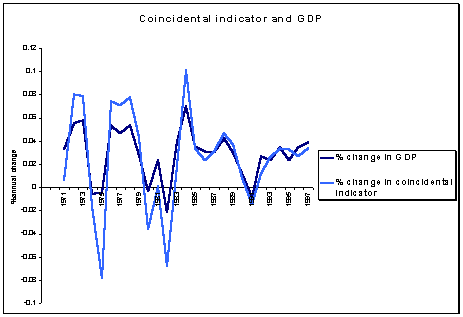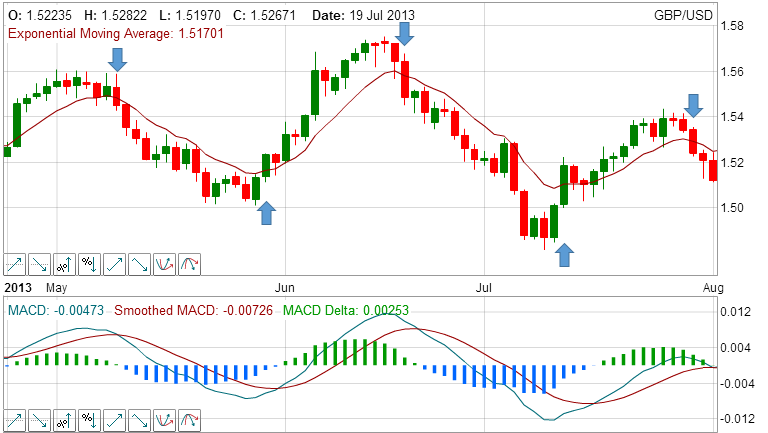Lagging Indicator
Post on: 16 Март, 2015 No Comment

3 Lagging Indicators to Watch Right Now
Definition: A lagging indicator is a statistic that follows an economic event. As such, it can be used to confirm what has happened in the economy, which can then be used to establish a trend. That makes it particularly useful to identify turning points in the business cycle .
The best way to use lagging indicators is in conjunction with two other sets of economic indicators. The first are leading indicators. such as stock prices, manufacturers’ orders for durable goods. and interest rates. These generally precede turning points in the business cycle.
You should also look at coincident indicators, such as GDP and employment. These tell you what is happening right now. Most people don’t bother looking at lagging indicators, but it’s really helpful to make sure you are reading the trends right. The lagging indicators will confirm that the economy is really headed into a recession, and when it is really over and the expansion phase has truly begun.
3 Lagging Indicators to Watch
The Dow Jones Transportation Average is useful lagging indicator. That’s because it tracks the stock performance of companies that ship our nation’s goods. Once manufacturers fill the durable goods orders, they have to ship it to customers. There’s a lag between the order and the shipments. If the Transportation Index rises, it means customers haven’t cancelled their orders, confirming the movements of the Durable Goods Orders Report. a leading economic indicator .
Unemployment is usually a lagging indicator because once people start to lose their jobs, the economy has already started declining. That’s because the last thing employers want to do is let people go. Unemployment will also continue to rise even after the economy has started to improve. That’s because employers wait until they are very sure the economy has recovered before they start hiring again.
Another lagging indicator is the Consumer Confidence Index. That’s because most people don’t really feel that the economy has changed until after it actually has. People base their feelings about the economy on how easy it is to find jobs. Usually, it doesn’t become difficult to find jobs until after the economy has turned negative.

Index of Lagging Indicators
The U.S. Conference Board, a non-profit agency, established an Index of Lagging Indicators for the Federal government. This index is published monthly. The Board weights seven lagging indicators to create the index. These indicators were identified by the NBER in the 1970s as events that followed the peaks and troughs in the business cycle.
Here’s a list of the Conference Board’s indicators, a quick summary of why they are useful, and their weights:
- Average Duration of Unemployment — The number of weeks those counted as unemployed by the Bureau of Labor Statistics have been looking for a job. During a recession, the number long-term unemployed will increase. Weight = 0.0361
- Inventories to Sales Ratio — The Bureau of Economic Analysis calculates this for manufacturing. wholesale, and retail companies. During a recession, inventories rise as sales decline. Weight = 0.1211
- Change in Labor Cost per unit of Manufacturing Output — This number increases when factories produce far less per employee, due to slower orders. The only way to reduce this number is to lay off workers, or produce more. Weight = 0.0587
- Average Prime Rate — When times are good, banks resist lowering rates (and their profits) even if business starts to slow. When times are bad, they resist raising rates until they are sure the demand supports it. Weight = 0.2815.
- Commercial and Industrial Loans — This is a lagging indicator because banks still a lot of loans in the pipeline even after a recession starts. Similarly, businesses that are losing revenue in the beginning stages of a recession will take out loans to cover costs. Once the economy starts to improve, it takes a while before banks have enough liquidity to start lending again. Weight = 0.0970.
- Consumer Debt to Income Ratio — Consumer debt statistics are compiled by the Federal Reserve System and personal income is reported by the Bureau of Economic Analysis. After a recession, consumers cautiously hold off accumulating debt even though their income starts to rise. Conversely, they will borrow more after a recession starts to support their lifestyle when they get laid off. Weight = 0.2101.
- Consumer Price Index for Services — This is a part of the Consumer Price Index. Service providers may raise prices in the beginning of a recession to maintain profit margins as demand starts to fall. Once the recession truly hits, they realize they’ve got to find a way to cut costs and lower prices. They may keep cutting prices, even once the recovery has begun. Those that are left after a recession are likely to continue lowering prices, trying to gain more business because it worked recognizing when the recession is over. Weight = 0.1955. (Source: Conference Board, Index of Lagging Indicators ) Article updated August 12 ,2014














